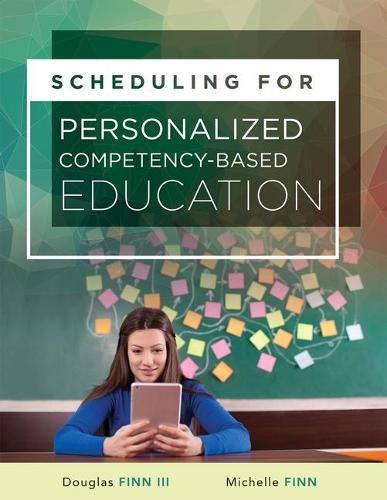Readings Newsletter
Become a Readings Member to make your shopping experience even easier.
Sign in or sign up for free!
You’re not far away from qualifying for FREE standard shipping within Australia
You’ve qualified for FREE standard shipping within Australia
The cart is loading…






A challenge at the heart of personalized competency-based education (PCBE) is grouping and scheduling students according to their learning needs rather than their age. With this guidebook, you’ll take a deep dive into the why and how of these foundational PCBE components. Gain clear guidance for gathering standards-based data and then using the results to create schedules that promote student proficiency.
Use this resource to organize learning on a day-to-day basis, based on individual student needs.
Recognize the shortcomings of a traditional education system. Explore the benefits of a well-organized PCBE school. Understand how to use student data and learning-focused school scheduling techniques to overcome common challenges faced during the transition to PCBE. Receive helpful example class schedules from schools that have successfully implemented PCBE processes. Learn how teachers can incorporate PCBE-style flexibility within individual classrooms for personalized learning.
Contents:
Introduction: The Transition to Personalized Competency-Based Education
Chapter 1: Differences Between Traditional Education Systems and PCBE Systems
Chapter 2: The Importance of Student Data Within a PCBE System
Chapter 3: An Overview of PCBE Scheduling
Chapter 4: Creation of a Horizontal PCBE Schedule
Chapter 5: Creation of a Vertical PCBE Schedule
Chapter 6: Implementation Within Stand-Alone Classrooms
Epilogue
Appendix: Example Schedules
$9.00 standard shipping within Australia
FREE standard shipping within Australia for orders over $100.00
Express & International shipping calculated at checkout
A challenge at the heart of personalized competency-based education (PCBE) is grouping and scheduling students according to their learning needs rather than their age. With this guidebook, you’ll take a deep dive into the why and how of these foundational PCBE components. Gain clear guidance for gathering standards-based data and then using the results to create schedules that promote student proficiency.
Use this resource to organize learning on a day-to-day basis, based on individual student needs.
Recognize the shortcomings of a traditional education system. Explore the benefits of a well-organized PCBE school. Understand how to use student data and learning-focused school scheduling techniques to overcome common challenges faced during the transition to PCBE. Receive helpful example class schedules from schools that have successfully implemented PCBE processes. Learn how teachers can incorporate PCBE-style flexibility within individual classrooms for personalized learning.
Contents:
Introduction: The Transition to Personalized Competency-Based Education
Chapter 1: Differences Between Traditional Education Systems and PCBE Systems
Chapter 2: The Importance of Student Data Within a PCBE System
Chapter 3: An Overview of PCBE Scheduling
Chapter 4: Creation of a Horizontal PCBE Schedule
Chapter 5: Creation of a Vertical PCBE Schedule
Chapter 6: Implementation Within Stand-Alone Classrooms
Epilogue
Appendix: Example Schedules